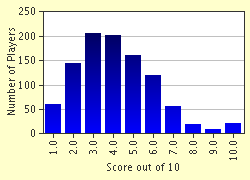Quiz Answer Key and Fun Facts
1. British Columbia has many great rivers, all flowing into the Pacific. Its most famous and largest river does indeed flow into the Pacific, but not while it's in British Columbia. This river is?
2. Alberta is named after whom?
3. In dollar terms, what is Saskatchewan's largest export?
4. Which town is Manitoba's main international seaport?
5. Ontario touches the Great Lakes, Hudson Bay, the St. Lawrence River, and the Ottawa River, so it's no surprise that water transport has always been important here. Many canals have been built to improve this transport. Which of the following is NOT a canal in Ontario?
6. Quebec is the centre of French culture in North America, but Quebeckers have been called "Canadiens" since at least 1700, and have little immediate connection to European France. On the 2001 Census, what percentage of Quebeckers listed "Canadian" as their ethnic origin?
7. If you've noticed, we've been marching across Canada from west to east. Since the last question was about Quebec, which province is this question about?
8. Next is the province of Newfoundland and Labrador. The name Newfoundland is of English origin, but from what language does the name Labrador come?
9. Nova Scotia's Halifax harbour is the largest harbour in Canada, and the second largest ice-free harbour in the world. What is the name of the large, well-sheltered part of the harbour, where the British Navy assembled convoys during both World Wars?
10. Finally we come to Prince Edward Island, the only province that has no land on the mainland of Canada. This island in the Gulf of St. Lawrence is mainly built on what kind of bedrock?
Source: Author
Dukasaur
This quiz was reviewed by FunTrivia editor
minch before going online.
Any errors found in FunTrivia content are routinely corrected through our feedback system.


